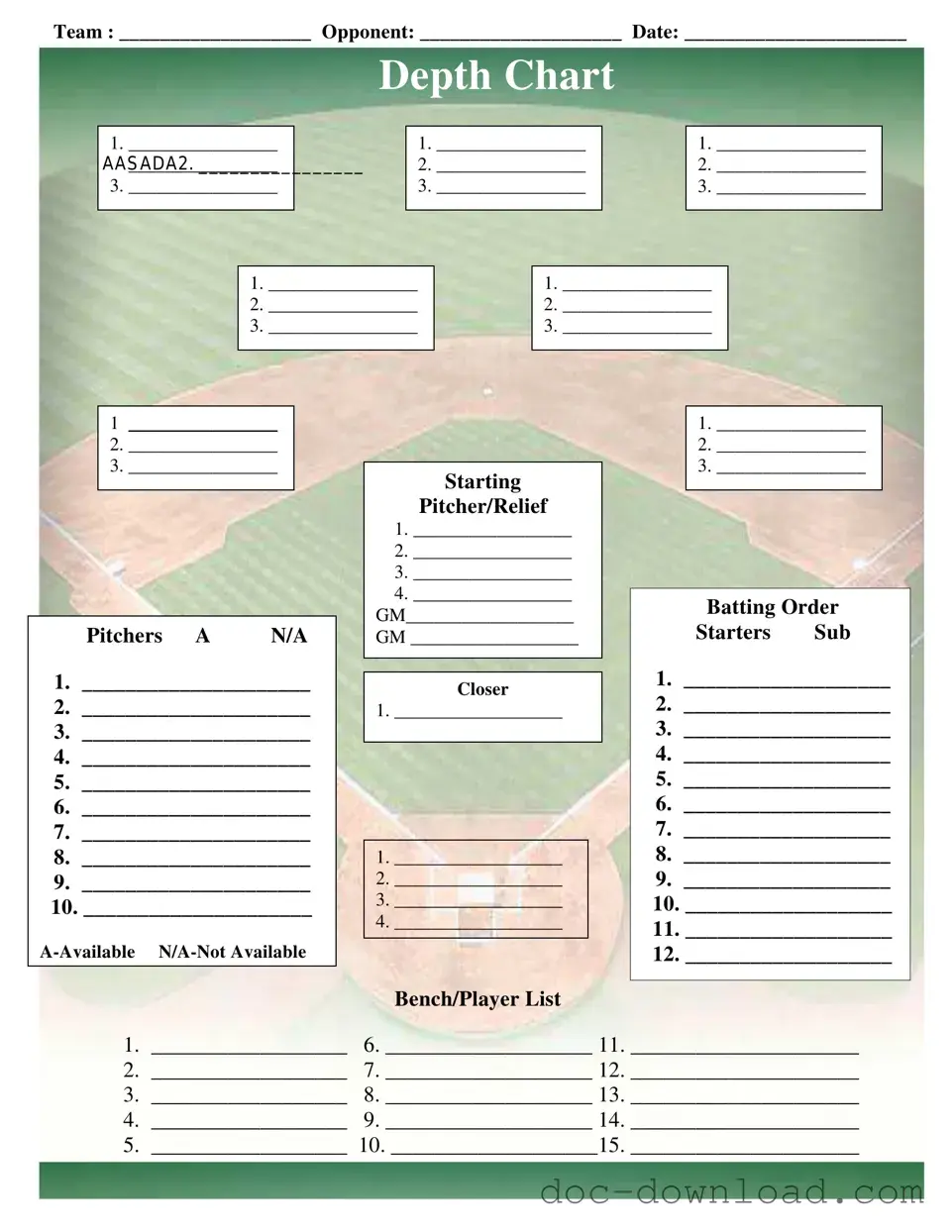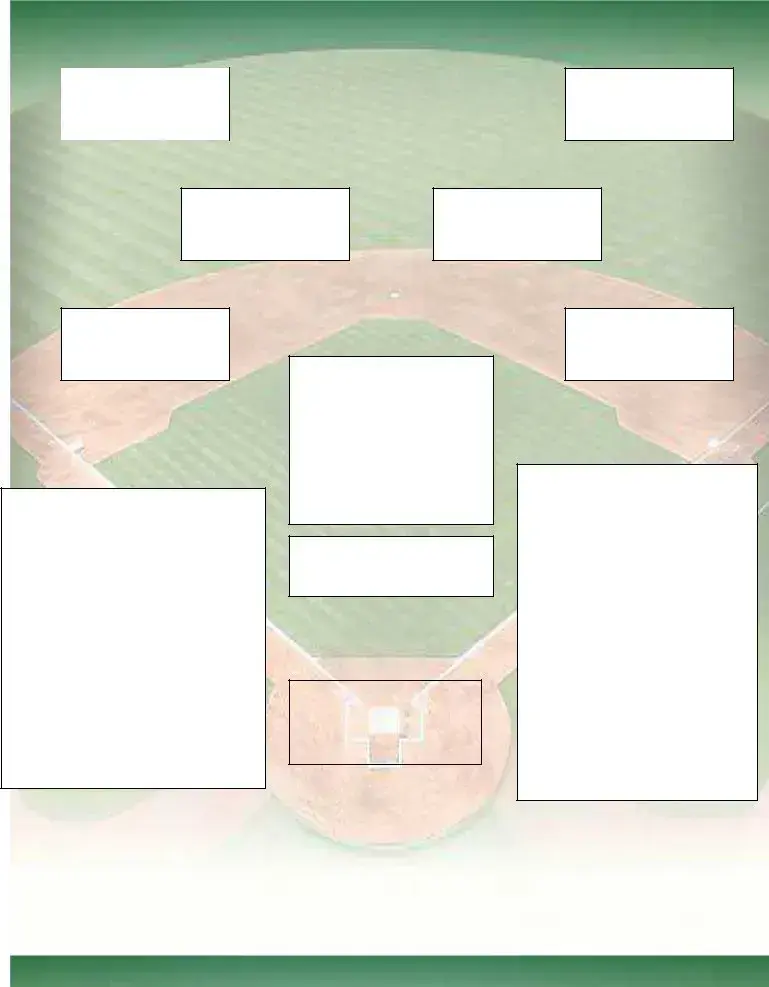The Baseball Field Lineup form shares similarities with the Roster Management form commonly used in various sports. Both documents are designed to provide a comprehensive overview of team members, including starters and substitutes. The Roster Management form typically includes sections for player names, positions, and availability, allowing coaches to make informed decisions about team composition for each game. Like the Baseball Field Lineup form, it often features a depth chart to illustrate player rankings and readiness, which helps in strategizing for upcoming matches.
Another document that resembles the Baseball Field Lineup form is the Game Day Roster. This form serves a similar purpose by detailing the players who will participate in a specific game. It includes sections for player names, positions, and roles, such as starters and substitutes. The Game Day Roster is crucial for ensuring that all players are accounted for and that their positions are clearly defined, much like the batting order and depth chart found in the Baseball Field Lineup form.
The Colorado Notice to Quit form is a legal document used by landlords to inform tenants of a violation of their lease agreement, including failure to pay rent, and to demand rectification or vacate the property. It serves as a preliminary step before legal proceedings may commence, ensuring that tenants have the opportunity to address the issue. This crucial form is integral to maintaining clarity and fairness in landlord-tenant relations within the state of Colorado. For more information, you may refer to Colorado PDF Forms.
The Pitching Rotation chart is also akin to the Baseball Field Lineup form, focusing specifically on the pitchers who will take the mound during a series of games. This document lists the starting pitcher and potential relief pitchers, similar to the pitching section in the Baseball Field Lineup form. It helps coaches manage pitching strategies and player workloads, ensuring that the team is well-prepared for each game.
The Player Availability form is another document that serves a similar function. It tracks which players are available to participate in upcoming games, including notes on injuries or other commitments. This form aids coaches in making lineup decisions, much like the availability indicators in the Baseball Field Lineup form, which denote whether players are ready to compete.
The Scouting Report is related to the Baseball Field Lineup form in that it provides insights into the opposing team. This document typically includes player statistics, strengths, and weaknesses. Coaches can use this information to adjust their lineup and strategy accordingly, paralleling the way the Baseball Field Lineup form is used to optimize team performance based on player capabilities.
The Practice Plan document is also similar, as it outlines the training regimen for the team. It may include player assignments, drills, and objectives for each practice session. Like the Baseball Field Lineup form, the Practice Plan is designed to enhance team performance by ensuring that all players are prepared and well-coordinated for upcoming games.
The Game Summary Report is another document that aligns with the Baseball Field Lineup form. This report captures the outcomes of games, including player performances and strategic decisions made during the match. It serves as a record that coaches can refer back to when planning future lineups, similar to how the Baseball Field Lineup form is used to inform game strategies.
Lastly, the Player Evaluation form shares similarities with the Baseball Field Lineup form by focusing on individual player performance. This document typically includes assessments of skills, strengths, and areas for improvement. Coaches can use this information to make informed decisions about player positions and batting orders, much like the evaluations that inform the selections made in the Baseball Field Lineup form.

